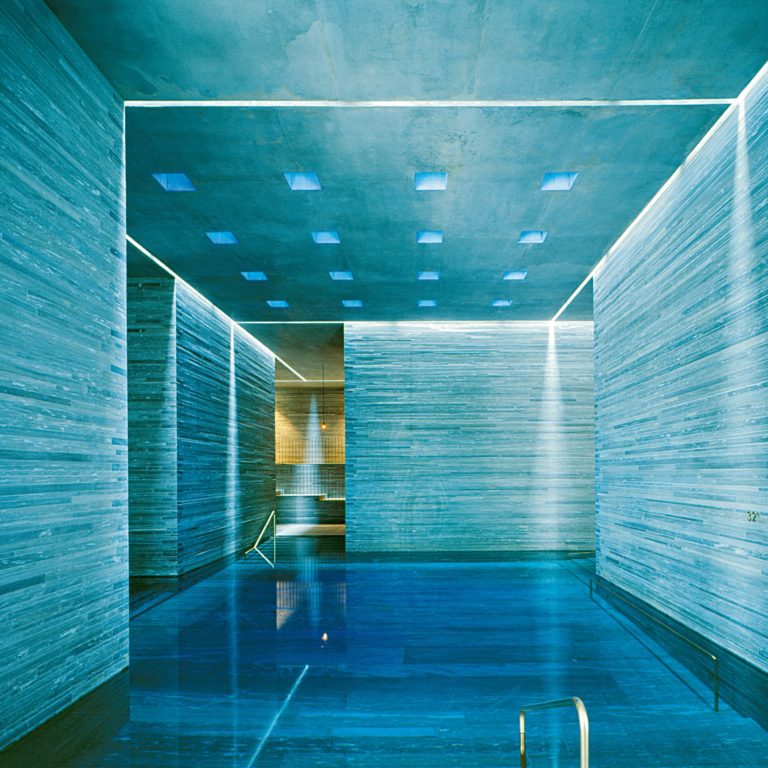
C Innenbad mit Lichtstimmung (c) Therme Vals
The beauty of presence
From the Werkraumhaus to the spa in Vals – blend naturally into the landscape.

C Innenbad mit Lichtstimmung (c) Therme Vals
From the Werkraumhaus to the spa in Vals – blend naturally into the landscape.
Star architect Peter Zumthor from Switzerland
Peter Zumthor attempts to get as close to nature as possible with his designs – the intention is to create surroundings
Design, function and beauty overlap. So much so that they cannot be separated into their individual components… That’s what architect Peter Zumthor once said. And indeed: his structures – from the Werkraumhaus to the spa in Vals – blend naturally into the landscape.
“For as long as I can remember, I have always experienced the beauty of man-made structures as a special presence of form, as a natural and self-confident existence that is specific to the build,” he wrote in his book “Thinking Architecture”. “Sometimes, particularly when a structure of this type is able to assert itself in the natural landscape, I see beauty. The structure, town, house or street then looks as if had been installed with intent. And it is this that creates a place. There is a front and back where it stands, a left and right, there is proximity and distance, an inside and outside, there are shapes that focus, compress or process the landscape. Surroundings are created.”
For as long as I can remember, I have always experienced the beauty of man-made structures as a special presence of form, as a natural and self-confident existence that is specific to the build
This special ability of approximating nature with buildings, of creating a new space without noisily intervening in the existing structure, is what makes this Swiss architect’s work so unique. Nature is repeatedly awarded the starring role although no cast is like any other. In the Kunsthaus Bregenz, for example, light has been given the lead. The semi-transparent structure lights up in different ways depending on the time of day. It was when Zumthor designed the building 15 years ago that he first experienced the outstanding quality that the trades in Vorarlberg are able to deliver. He has since worked with many tradespeople in his projects. It’s no coincidence, for example, that with the Werkraumhaus he created a special place for the trades in the Bregenzerwald. Here, it is all-round transparency that permits the landscape to flow through the building.
The reduction in stone that Peter Zumthor employed to build the spa in Vals in Switzerland makes the structure appear as if it has been hewn from the mountainous mass. The summer pavilion that the architect realised for the Serpentine Gallery in London in 2011 made visitors “work” before they were able to grasp the facets of nature: they were led down a path through cave-like passages into a paradisiac atrium.
Zumthor has refined his respect for “what’s around” to such a level of mastery that visitors get the impression that his designs have always existed. “Each structure is an intervention into a historic situation,” wrote Peter Zumthor.
It is decisive for the quality of this intervention whether it is possible to imbue the new with features that are able to enter into a meaningful exchange with what is already there.
“Because for the new to be able to assume its place, it must first encourage us to see what already exists with fresh eyes. You’re throwing a pebble into the water. Sand whirls up and settles again. The disturbance was necessary. The stone has found its place. But the pond is not the same as it was before.”
The star architect Peter Zumthor was born in Basel in Switzerland in 1943. Two of his most important buildings are located in Vorarlberg.
Links: